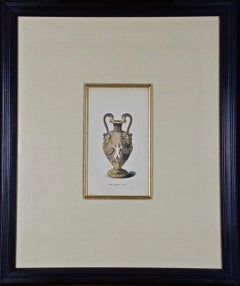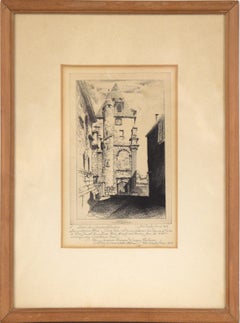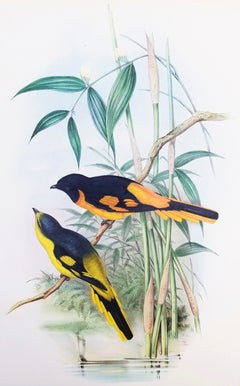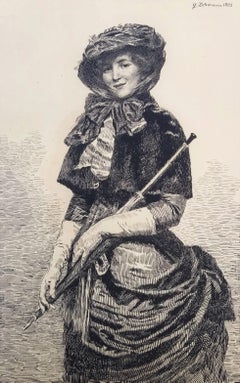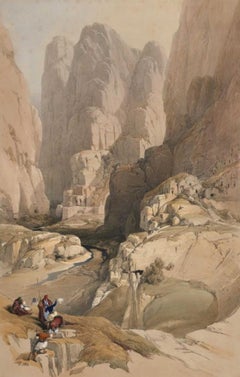Victorian Prints and Multiples
Mid-19th Century Victorian Prints and Multiples
Engraving
Mid-20th Century Victorian Prints and Multiples
Aquatint
1940s Victorian Prints and Multiples
Paper, Ink, Drypoint, Etching
1850s Victorian Prints and Multiples
Watercolor, Lithograph
1890s Victorian Prints and Multiples
Etching, Laid Paper, Intaglio
19th Century Victorian Prints and Multiples
Lithograph
Late 19th Century Victorian Prints and Multiples
Engraving
Early 1800s Victorian Prints and Multiples
Watercolor, Engraving, Aquatint
1820s Victorian Prints and Multiples
Watercolor, Engraving, Intaglio
Late 19th Century Victorian Prints and Multiples
Lithograph
1850s Victorian Prints and Multiples
Woodcut, Engraving
Early 20th Century Victorian Prints and Multiples
Lithograph
Early 20th Century Victorian Prints and Multiples
Lithograph
Early 20th Century Victorian Prints and Multiples
Lithograph
Early 20th Century Victorian Prints and Multiples
Lithograph
Early 20th Century Victorian Prints and Multiples
Lithograph
1830s Victorian Prints and Multiples
Watercolor, Engraving, Aquatint, Intaglio
Early 20th Century Victorian Prints and Multiples
Lithograph
Early 20th Century Victorian Prints and Multiples
Lithograph
Early 20th Century Victorian Prints and Multiples
Lithograph
Early 20th Century Victorian Prints and Multiples
Lithograph
Early 20th Century Victorian Prints and Multiples
Lithograph
Early 20th Century Victorian Prints and Multiples
Lithograph
Early 20th Century Victorian Prints and Multiples
Lithograph
Early 20th Century Victorian Prints and Multiples
Lithograph
1830s Victorian Prints and Multiples
Watercolor, Lithograph
1840s Victorian Prints and Multiples
Watercolor, Lithograph
Early 19th Century Victorian Prints and Multiples
Engraving
Early 20th Century Victorian Prints and Multiples
Lithograph
Early 20th Century Victorian Prints and Multiples
Lithograph
Early 20th Century Victorian Prints and Multiples
Lithograph
1870s Victorian Prints and Multiples
Watercolor, Lithograph
1870s Victorian Prints and Multiples
Watercolor, Lithograph
19th Century Victorian Prints and Multiples
Lithograph
19th Century Victorian Prints and Multiples
Lithograph
Late 18th Century Victorian Prints and Multiples
Engraving
Late 18th Century Victorian Prints and Multiples
Engraving
1840s Victorian Prints and Multiples
Watercolor, Lithograph
1850s Victorian Prints and Multiples
Watercolor, Lithograph
Mid-19th Century Victorian Prints and Multiples
Lithograph
Early 20th Century Victorian Prints and Multiples
Lithograph
Late 19th Century Victorian Prints and Multiples
Lithograph
1860s Victorian Prints and Multiples
Watercolor, Lithograph
1790s Victorian Prints and Multiples
Watercolor, Engraving, Intaglio
1820s Victorian Prints and Multiples
Watercolor, Lithograph
1820s Victorian Prints and Multiples
Watercolor, Engraving, Intaglio
1840s Victorian Prints and Multiples
Watercolor, Lithograph
1840s Victorian Prints and Multiples
Watercolor, Lithograph
1820s Victorian Prints and Multiples
Watercolor, Lithograph
1820s Victorian Prints and Multiples
Watercolor, Lithograph
1850s Victorian Prints and Multiples
Watercolor, Lithograph
1850s Victorian Prints and Multiples
Watercolor, Lithograph
Early 1800s Victorian Prints and Multiples
Watercolor, Engraving, Intaglio
1840s Victorian Prints and Multiples
Aquatint
1820s Victorian Prints and Multiples
Etching, Intaglio
1840s Victorian Prints and Multiples
Watercolor, Lithograph
Early 20th Century Victorian Prints and Multiples
Lithograph
1820s Victorian Prints and Multiples
Watercolor, Engraving, Intaglio
1920s Victorian Prints and Multiples
Etching
Early 1900s Victorian Prints and Multiples
Etching, Intaglio
